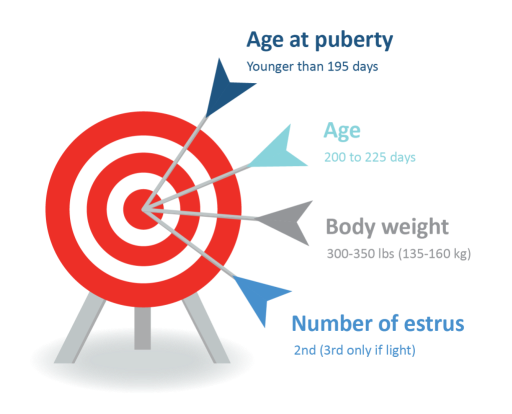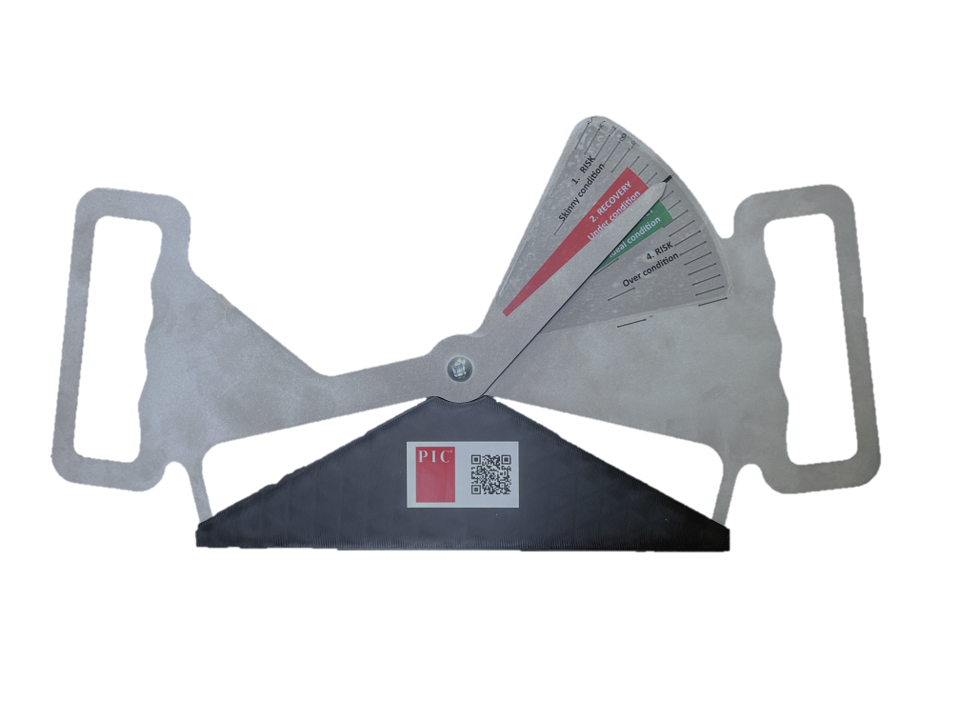Hit targets for ideal breeding gilt lifetime performance, cost savings.
As swine genetics have advanced, so have parameters for gilt eligibility at first breeding. Meeting eligibility requirements set gilts up for a successful first parity and beyond for maximum lifetime performance.
It’s a best practice to think of gilt development as a process from the grower phase through parity 1. See the big picture, including breeding targets, here.
Continue reading to focus on optimizing gilt eligibility at first breeding.
PIC defines gilt eligibility using these four components:
- Age at puberty
- Age at first breeding
- Body weight at first breeding
- Number of estrus at first breeding
PIC has identified specific targets within each of these components. Hitting all targets on each gilt serviced is vital to optimize efficiency, longevity and lifetime performance. Each target is equally important. Research shows meeting just two or three of the four targets will not have the same positive results.

Target 1: Gilt age at puberty
It is ideal for gilts to express their first heat before 195 days of age. Industry research confirms a link between early sexual maturity and improved sow lifetime productivity. Manage gilts to stimulate an early puberty onset and identify and record the gilts in estrus. Gilts expressing puberty younger than 195 days (28 weeks) of age tend to have higher lifetime performance.
Target 2: Gilt age at first breeding
The ideal age for breeding is between 200 and 225 days. Gilts older than 225 days of age are likely overweight. Research shows gilts bred later than 240 days have a decreased litter size in their second parity (P2), longer wean-to-service interval and a shorter production life overall.
Target 3: Gilt body weight at first breeding
The ideal weight for a breeding gilt is between 300 and 350 pounds (135 to 160 kgs).
This weight will set gilts up for ideal weight at farrowing and overall lifetime maintenance demands. To meet this target, the gilt’s average daily gain (ADG) must be between 1.33 and 1.77 pounds (600-800 grams) per day.

Weight is likely the most challenging component of gilt eligibility to measure. The flank tape is a more accurate measure of body condition for gilts. Contact your PIC representative to request flank tapes for use on gilts on your farm.
Although PIC does not recommend using calipers to measure gilt body condition, it is important to know that in 2023, PIC updated its body condition caliper to reflect the growth rate and body composition of the PIC Camborough® sow. Under-conditioned (thin) females have an elevated risk of pelvic organ prolapse (POP) and reduced longevity. PIC does not recommend using the caliper on gilts because heavy gilts might not be over-conditioned.
Target 4: Breeding gilts during second estrus
Accurately track estrus and breed gilts on the second estrus. Research shows delaying breeding to the second estrus has a positive effect on litter size. Only delay breeding to the third estrus if a gilt doesn’t meet the minimum target weight at breeding.
For more details about gilt eligibility and other aspects of sow and gilt management, refer to the PIC Gilt and Sow Management Guidelines.






